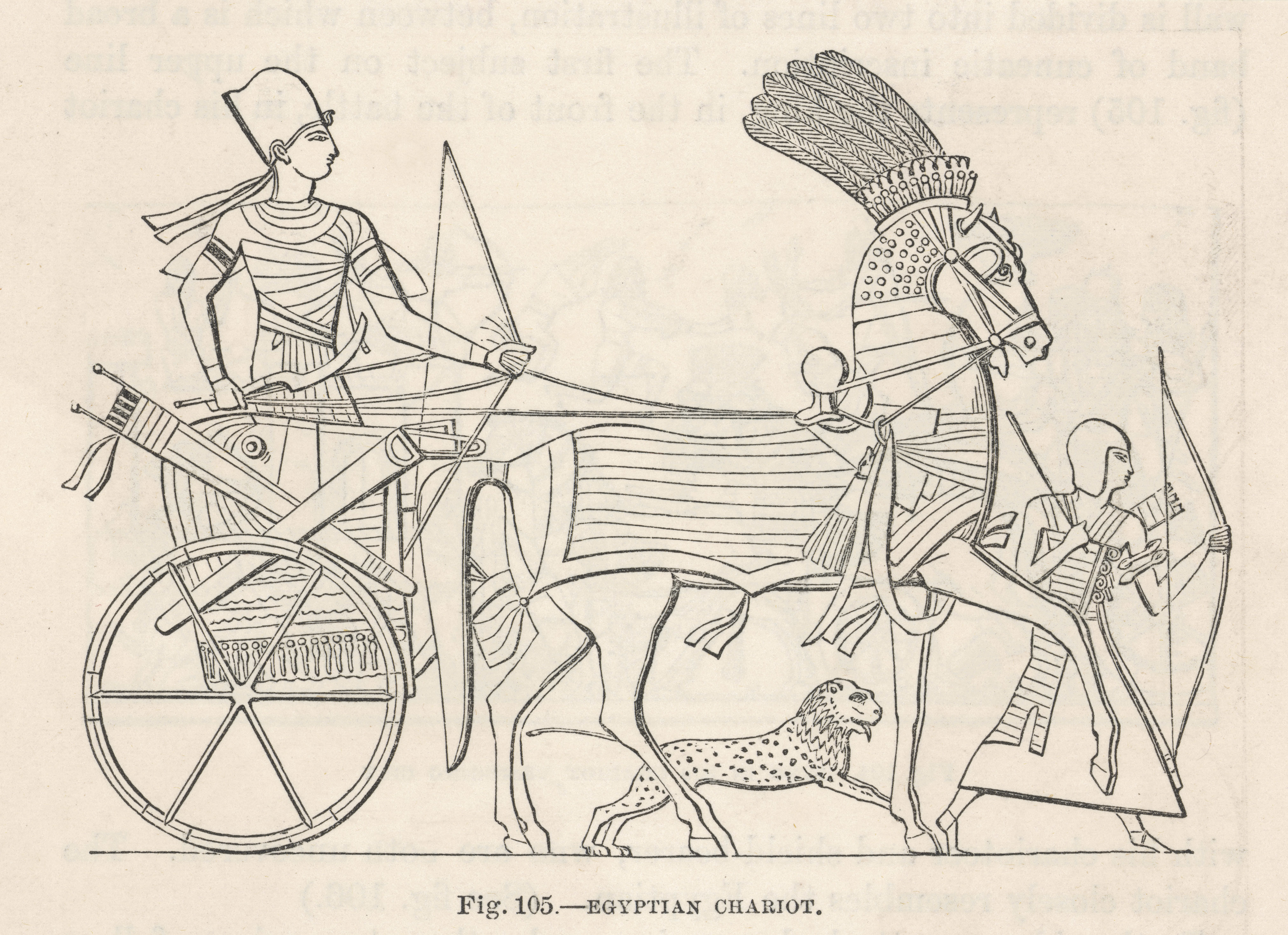
What was the cost of an Egyptian chariot back in around 1500 BC? That was the state of the art offensive weapon at the time.
In Warfare in the Ancient World, Brian Todd Carey gives some hints, which raised my curiosity.
Update, other discussion: A few indicators for King Solomon’s wealth; part 1
The Sumerians developed the chariot, which was heavy and pulled by wild donkeys, or onagers. The wheels were solid. With that weight and propulsion, it was slow and cumbersome.
The Egyptians refined the concept, using spoked wheels made with bentwood construction and pulled by domesticated horses. This reduced weight and increased speed. Moving the axle to the rear of the chariot improved stability. Their chariots were fast and maneuverable.
Those chariots were also expensive.
The supporting logistics train required plenty of skilled craftsmen. The book says the following trades were needed to get chariots in the field:
- Horse breeders
- Horse trainers
- Wheel makers (wheelwrights)
- Chariot builders
- Bow makers (bowyers)
- Metal workers
- Armorers
And in the field there would be people to manage the herds of horses and repair chariots.
Ongoing access to lots of light and heavy woods was needed, such as the cedars from Lebanon.
The Chariot in Egyptian Warfare at Tour Egypt provides more background on the construction of a chariot, along with some tidbits about costs.
Article describes breakthrough of the spoked wheel (tidbit: the spokes were lashed to the rim with leather {or cow intestines}, which fed through slots in the rim so the leather did not get worn out from contact with the ground).
Article also cites German carpenters who spent 600 hours building a chariot.
At the normative work schedule anytime earlier than the 20th century, that would be six days a week, ten hours a day, or about 10 work weeks, or 20% of a year.
In addition to construction time, consider the other costs:
Special wood from Lebanon would have to felled, cut, and transported to manufacturing site in Egypt.
Metal for holding the axle(s) and used in a few other key places would have to be mined, refined, transported, and stamped.
Leather obtained and worked to form harness and lash spokes to rim.
Acquisition cost
The Chariot in Egyptian Warfare article explains chariots were expensive. A wealthy warrior would be provided a team of horses by the king along with a crew of five attendants. The attendants had to be outfitted by the charioteer.
Ongoing maintenance was needed, which would have also been expensive.
Article says the chariot would cost, (which I’m quoting to be precise) “three deben of silver for the shaft and five for the body.” This was a “small fortune.”
Ah, a data point I can work with. Three deben and five deben, or eight deben to buy just the chariot itself.
So, what is a deben?
I had no idea when I first read the article.
Ah, Wikipedia to the rescue. The article Deben (unit) explains this was a unit of measure in ancient Egypt.
In the New Kingdom, it was 91 grams. That is equal to 2.93 troy ounces.
Thus, we have:
| item | deben | grams | ounces |
| one deben | 1 | 91 | 2.93 |
| axle shaft | 3 | 273 | 8.79 |
| cart | 5 | 455 | 14.65 |
| chariot | 8 | 728 | 23.44 |
So, the whole chariot by itself would cost about 23.4 troy ounces of silver.
Add to that the cost of the horses along with the cost to equip the staff, the charioteer, and the archer.
Feeding cost of the horses and staff and maintenance of all the above equipment would have also been expensive.
Guess of cost in relation to day’s pay
I don’t have any reference point for wages in the New Kingdom era of Egypt.
What I do have is the wages of Legionnaires in the Roman army and the number of denarii coins minted from a pound of silver.
I previously described Roman legionnaire’s pay over time. Increases are an indication of debasement of currency.
In Augustus’ reign (about 14 AD), 85 denarii were minted from a pound of silver. At 373.24 grams in a troy pound, that would be 4.39 grams of silver in a denarius.
Legionnaires were paid 225 denarii a year, or 2.5 sesterces a day. That would 987.75 grams a year, or 2.64 troy pounds, or 31.756 troy ounces.
If my math is correct, a chariot in the New Kingdom would cost 23.4 troy ounces and a Roman Legionnaire in 14 AD was paid 31.8 troy ounces a year.
If my concept is on track, that means a chariot by itself would cost somewhere around 9 months wages for a Roman soldier (23.4 oz / 31.8 oz x 12 mo/yr = 8.8 months).
Add in the cost of the horses, composite bow, lots and lots of arrows, and feeding & maintenance shows having one chariot available for battle was quite a costly undertaking.
Anyone have any other guesses on the cost to build an Egyptian chariot?